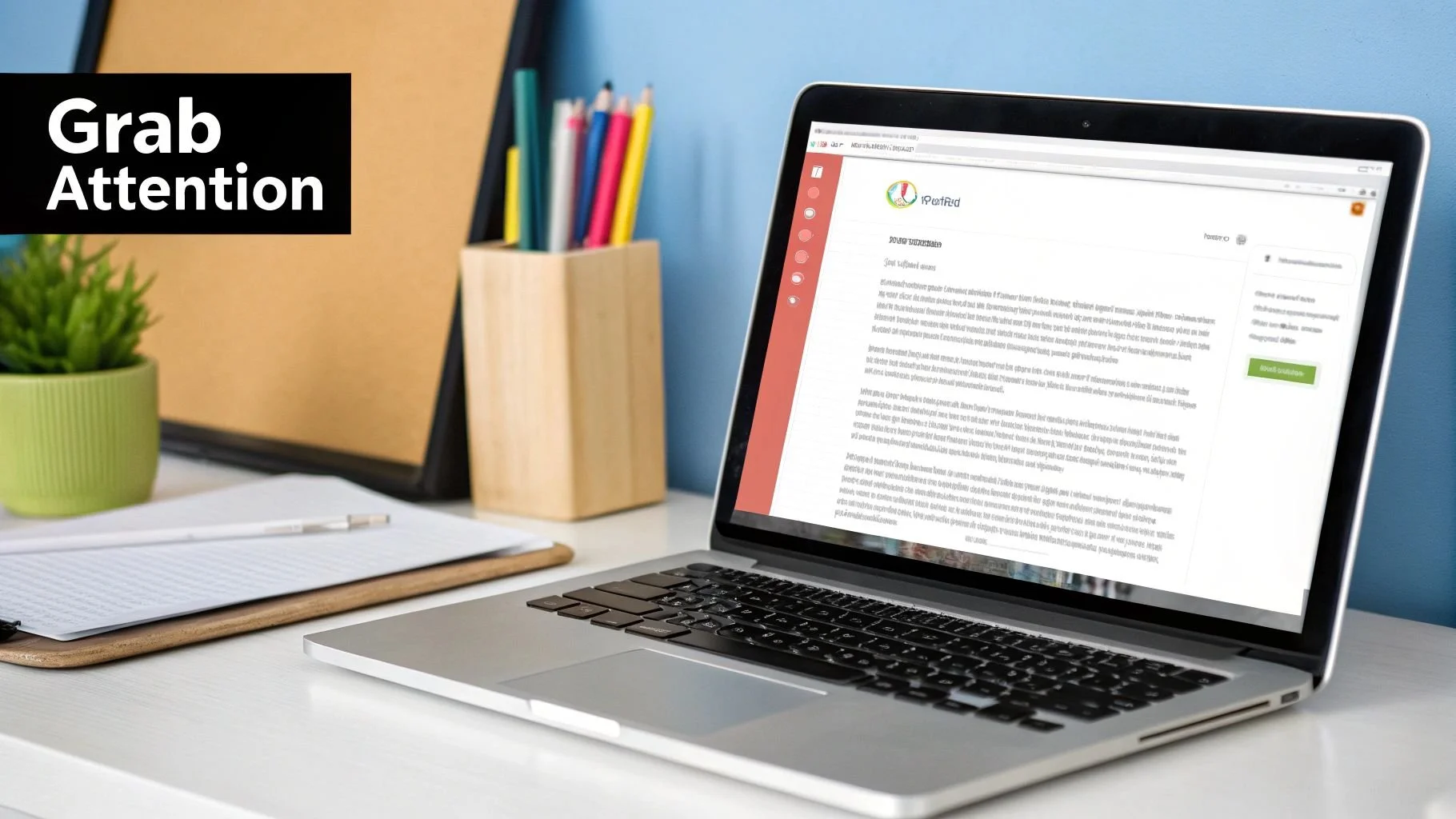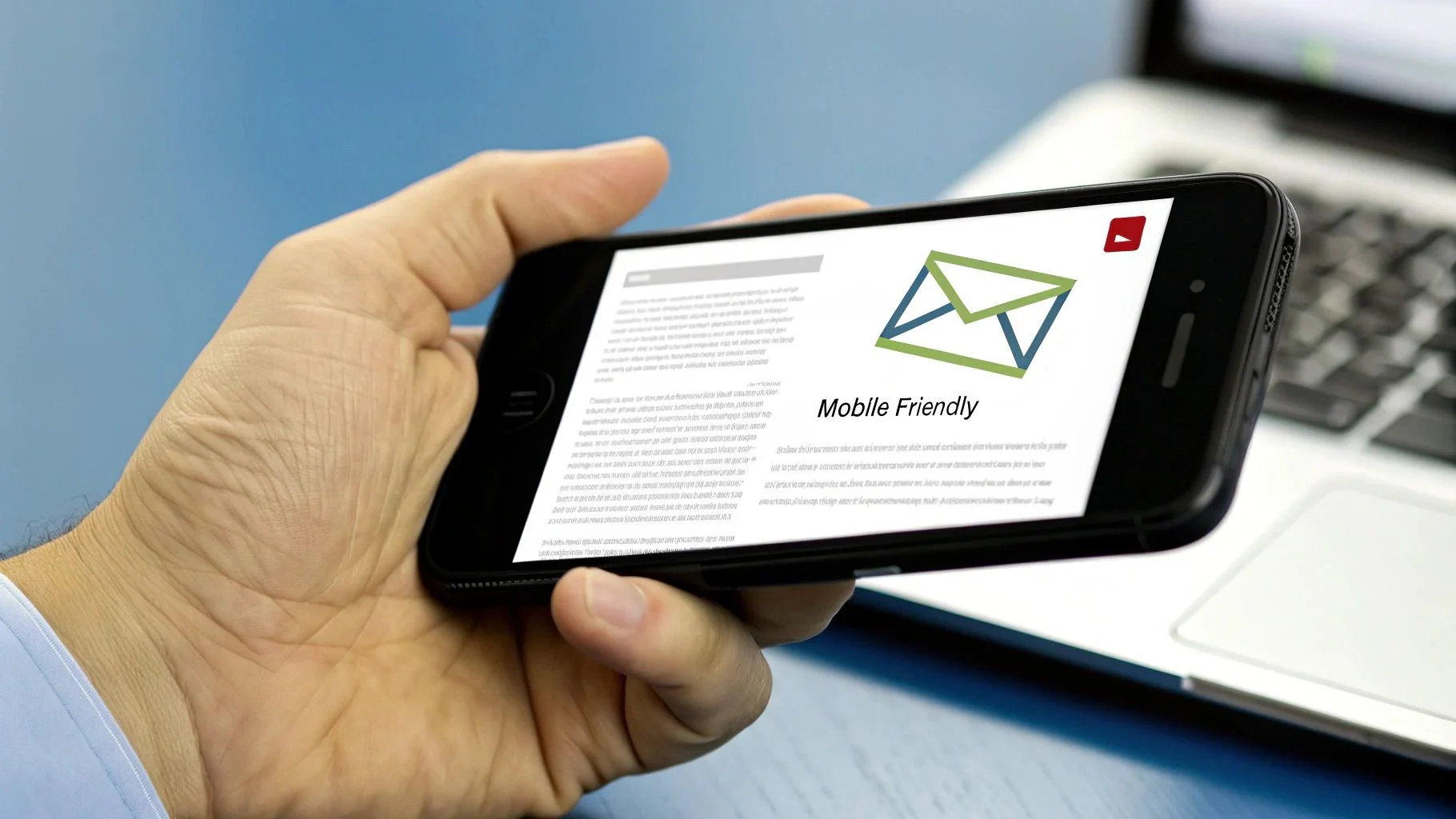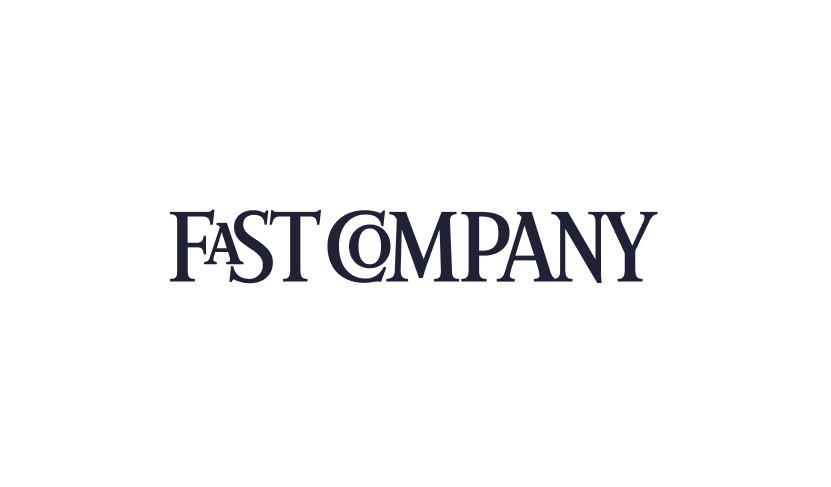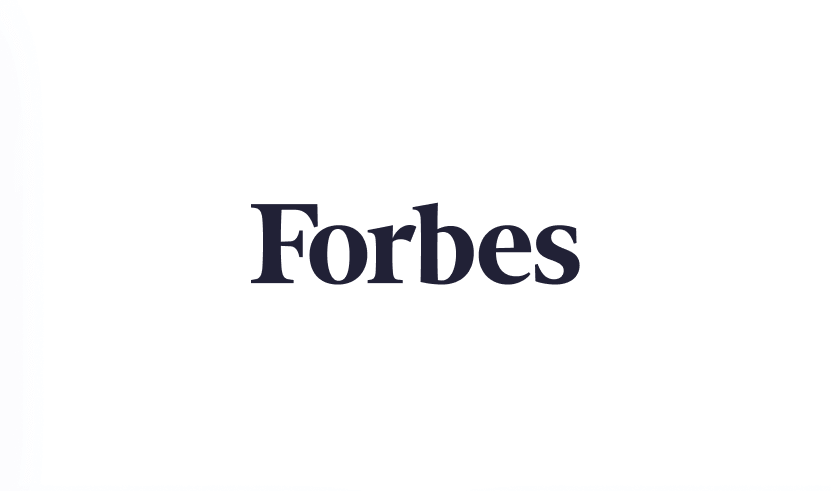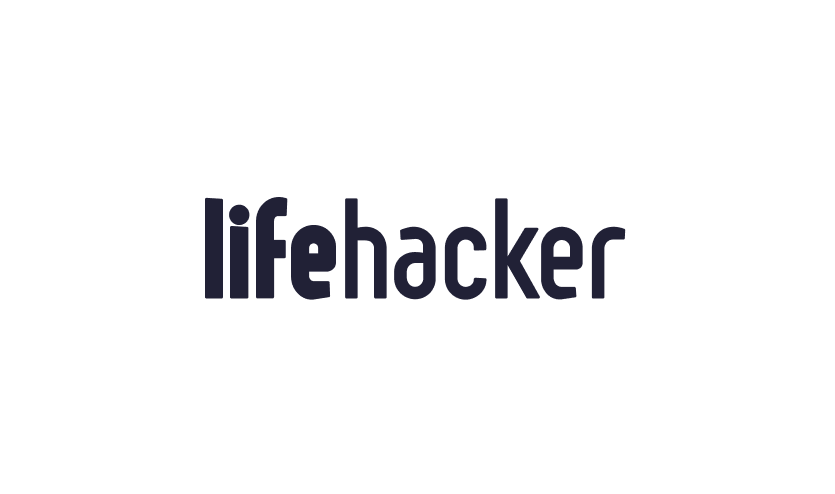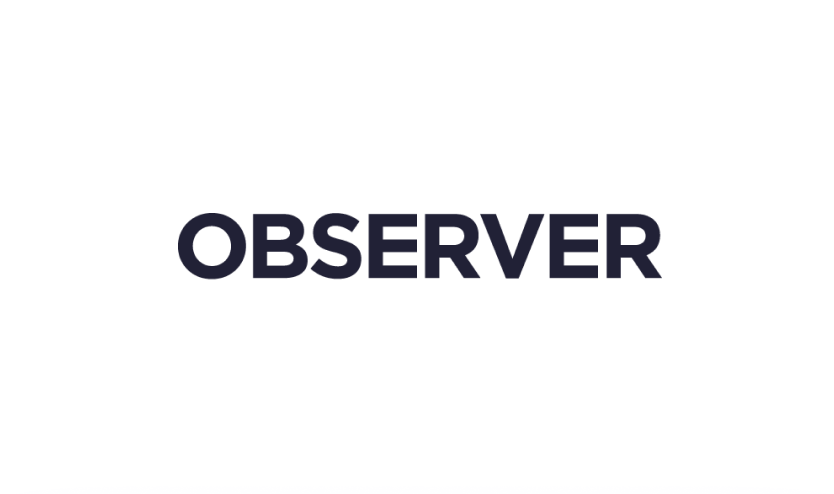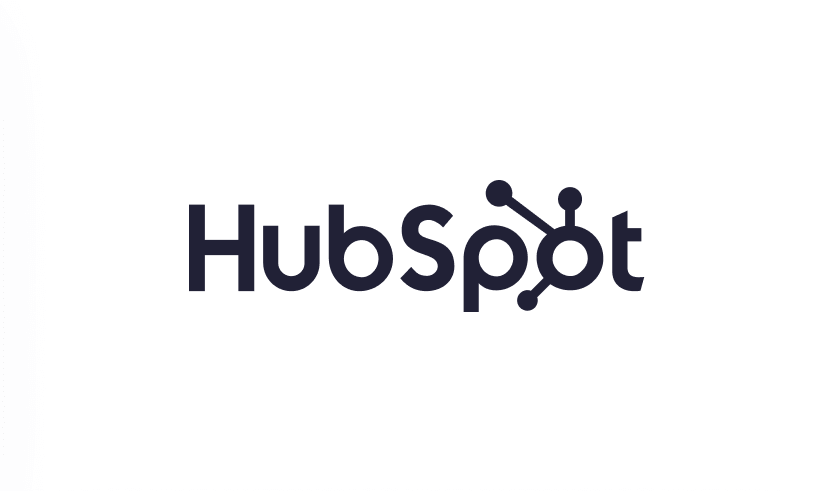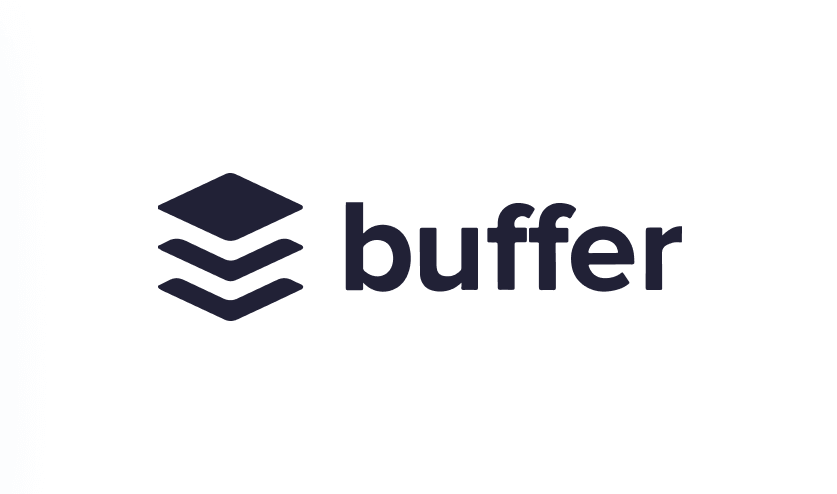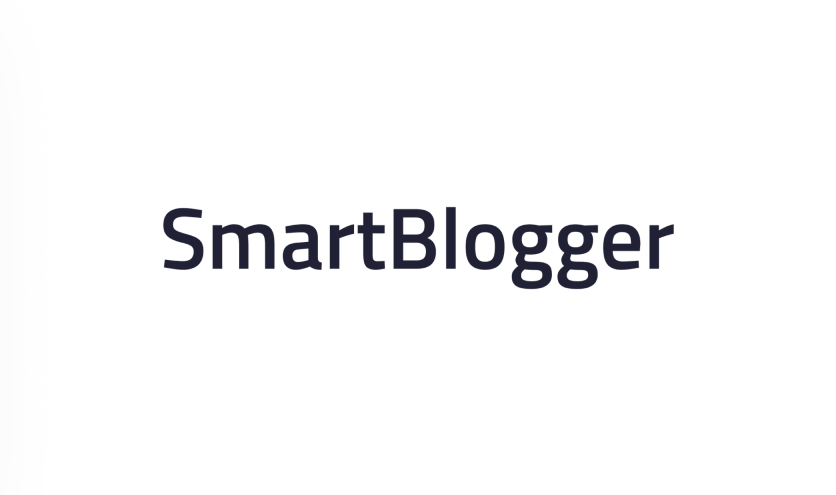Boost Your Results: How to Improve Email Open Rates in 2025
Unlocking the Secrets to Higher Email Open Rates
Want to improve email open rates and boost your email marketing ROI? A high open rate is crucial for driving engagement and conversions. This listicle reveals eight proven strategies to help you achieve just that. Learn how to optimize your subject lines, sending frequency, sender information, and email list segmentation. We'll also cover mobile optimization, re-engagement campaigns, preview text, and authentication best practices to ensure your emails reach the inbox and get opened. These techniques are essential for e-commerce business owners, email marketers, and anyone looking to maximize their email marketing success.
1. Compelling Subject Line Optimization
One of the most impactful ways to improve email open rates is through compelling subject line optimization. This is the practice of crafting subject lines that instantly grab attention, create a sense of urgency, or pique the recipient's curiosity, all while avoiding spam triggers. Your subject line is the first, and often only, impression recipients have of your email. It's the digital equivalent of a storefront window display – a compelling one draws customers in, while a bland one is easily overlooked. Therefore, optimizing your subject lines is crucial for maximizing your open rates and the overall success of your email marketing campaigns. This strategy involves testing different approaches, such as personalization, posing questions, highlighting benefits, and leveraging urgency, to determine what resonates best with your specific audience.
Subject line optimization isn't about trickery; it's about effectively communicating the value proposition of your email. It requires understanding your audience’s needs and interests, and then crafting subject lines that speak directly to them. For e-commerce business owners, this could mean highlighting a special discount or showcasing a newly arrived product. For newsletter publishers, it might involve teasing exclusive content or offering a glimpse into trending topics. Regardless of your industry, the goal is to create a subject line that promises value and encourages the recipient to click.
Features of effective subject line optimization include personalization, incorporating the recipient’s name or location for a more tailored experience. Creating a sense of urgency and scarcity can also be highly effective, prompting immediate action. Crafting curiosity-driven headlines that tease the email's content can also significantly boost open rates. Focusing on the benefit the recipient will receive by opening the email is another powerful technique. Even using emojis can enhance visual appeal and make your email stand out in a crowded inbox. Finally, A/B testing is critical for understanding what truly resonates with your audience.
The pros of subject line optimization are numerous. A well-crafted subject line can dramatically increase open rates by 20-50%, leading to higher click-through rates and ultimately, improved conversions. It's a relatively easy tactic to implement and test, with changes often having an immediate impact on campaign performance. Compared to other marketing strategies, subject line optimization is a remarkably cost-effective way to improve your ROI.
However, there are some potential downsides to consider. If overdone, particularly with urgency and scarcity tactics, subject lines can appear spammy and damage your brand reputation. What works for one audience might not work for another, emphasizing the importance of ongoing testing and refinement. Creating a compelling subject line also sets an expectation for the email's content. If the content fails to deliver on the subject line's promise, it can lead to disappointment and damage subscriber trust.
Real-world examples demonstrate the power of effective subject line optimization. BuzzFeed masterfully uses curiosity-driven subjects like "You'll Never Guess What Happened Next" to entice clicks. Spotify leverages personalization with subject lines like "Your 2023 Wrapped is here, [Name]". Sephora effectively employs urgency-based subject lines such as "Last chance: 50% off ends tonight". The Morning Brew's casual, conversational tone, as seen in subject lines like "Tesla's having a moment", resonates with their target audience. Learn more about Compelling Subject Line Optimization.
To optimize your own subject lines, consider these actionable tips: Keep them concise, ideally between 30-50 characters, for optimal display on mobile devices. Experiment with emojis to see what your audience prefers. Avoid spam trigger words like "FREE," "URGENT," or excessive punctuation, which can land your emails in the spam folder. Utilize the preview text as an extension of your subject line to provide further context and entice clicks. Segment your audience and craft different subject line versions tailored to each segment's specific interests and needs.
The importance of compelling headlines, and by extension, subject lines, has been championed by marketing luminaries like David Ogilvy, the advertising pioneer, and Ann Handley of MarketingProfs. Email marketing platforms like Mailchimp and Campaign Monitor have also contributed to the popularization and refinement of subject line optimization techniques. By focusing on this crucial element of your email marketing strategy, you can significantly improve email open rates, drive engagement, and achieve your marketing goals.
2. Send Time and Frequency Optimization
One of the most impactful levers you can pull to improve email open rates is send time and frequency optimization. This strategic approach goes beyond simply blasting out emails and delves into the nuances of when and how often your audience is most receptive to your messages. It recognizes that different audiences have varying email consumption patterns influenced by factors like demographics, industry, time zones, and personal habits. By analyzing engagement data, you can pinpoint the optimal days of the week, times of day, and frequency of sends to maximize the chances of your emails being opened.
This method deserves a prominent place in any list of email marketing best practices because it directly addresses the challenge of cutting through inbox clutter. Instead of relying on guesswork, you’re using data-driven insights to ensure your emails arrive at the most opportune moments, increasing their visibility and boosting open rates. This, in turn, lays the foundation for higher click-through rates and ultimately, improved conversions. The benefits can be substantial, with studies showing open rate improvements of 20-30% with proper timing.
Send time and frequency optimization involves several key features:
Time Zone Consideration: Crucial for global audiences, this ensures emails arrive at the recipient's local time, maximizing their relevance and open potential.
Day-of-Week Performance Analysis: Tracking open rates by day helps identify which days yield the best results for your specific audience.
Hour-by-Hour Engagement Tracking: This granular analysis pinpoints the peak hours when your subscribers are most actively checking their inboxes.
Frequency Testing: Experimenting with daily, weekly, or monthly sends allows you to find the sweet spot that keeps your audience engaged without overwhelming them.
Seasonal and Holiday Adjustments: Recognizing that email behavior fluctuates during holidays and specific seasons allows you to tailor your sending schedule accordingly.
Industry-Specific Timing Considerations: Leveraging industry benchmarks and best practices provides a starting point for your optimization efforts.
The advantages of implementing this strategy are clear: improved open rates, reduced email fatigue and unsubscribe rates, and maximized visibility in crowded inboxes. It's a data-driven approach with measurable results, allowing you to continually refine your strategy based on performance.
However, there are also challenges to consider. Optimal times can shift over time due to changing audience behavior or external factors. What works for one segment of your audience may not work for another. The process requires consistent data collection and analysis, and managing multiple time zones for a global audience can be complex.
Numerous examples demonstrate the power of send time optimization. HubSpot, for instance, found that Tuesday-Thursday at 10 AM generally works best for B2B audiences. Retail brands like Target often see success with weekend morning sends when consumers are more likely to be browsing and making purchases. News publications like The New York Times send multiple daily emails at consistent times to cater to their readers' news consumption habits. Fitness brands might send Monday morning motivation emails to align with their audience's fitness goals.
To effectively implement send time and frequency optimization, start with industry benchmarks but prioritize your own data. Test different times for different types of content, considering your audience's work schedule and lifestyle. Leverage automation tools to send emails at the optimal times across different time zones. And importantly, monitor performance regularly as patterns can shift. Learn more about Send Time and Frequency Optimization This resource can provide further insights into optimizing your email frequency.
This method has been popularized by leading email marketing research companies like Mailchimp and Constant Contact, along with marketing automation platforms such as HubSpot. Numerous email timing studies by companies like GetResponse and Campaign Monitor have further solidified the importance of this strategy. By adopting these techniques, you can transform your email marketing from a guessing game into a precise, data-driven process that consistently delivers results.
3. Sender Name and From Address Optimization
One of the most impactful, yet often overlooked, aspects of improving email open rates is sender name and from address optimization. This strategy involves carefully selecting and testing the 'from' name and email address to build trust, recognition, and ultimately, encourage recipients to open your emails. Before even glancing at the subject line, subscribers see who the email is from, making this a critical first impression. Choosing the right sender information can significantly impact whether your email lands in the inbox or the trash folder, and more importantly, whether it gets opened.
This optimization process involves deciding between using a personal name, a company name, or a hybrid approach that combines both. For instance, using "John from Acme Corp" provides a personal touch while still maintaining brand identity. The key is to choose a sender name that resonates with your target audience and creates a sense of familiarity and trust. This is particularly crucial in today's overflowing inboxes where recipients are increasingly selective about which emails they open.
Several features contribute to effective sender name and from address optimization. A/B testing personal names against company names allows you to determine which approach resonates best with your specific audience. Hybrid approaches, like the "Name from Company" format, offer a balance between personalization and brand recognition. Maintaining a consistent sender identity across all email campaigns is essential for building familiarity and avoiding confusion. Optimizing the reply-to address ensures that responses are directed to the appropriate inbox, facilitating timely communication and fostering positive customer relationships. Being mindful of display name character limits prevents your sender name from being truncated, especially on mobile devices. Finally, incorporating brand recognition elements in the from address or display name further reinforces brand identity.
The benefits of optimizing your sender information are substantial. A well-chosen sender name builds trust and familiarity with recipients, increasing the likelihood of them opening your emails. Studies have shown that optimizing sender information can boost open rates by 15-35%. A recognizable sender also helps your emails avoid spam filters, ensuring they reach the intended inbox. Furthermore, using a personal name can create a more personal connection with your audience, leading to higher engagement and conversion rates.
However, there are also potential drawbacks to consider. Personal names may not be suitable for all business types, particularly in highly formal or corporate sectors. Inconsistency in the sender name can create confusion and erode trust, so changes should be made strategically and infrequently. Different email types, such as newsletters, promotional offers, or transactional emails, may require different sender name approaches. Finally, finding the optimal sender name requires thorough A/B testing and ongoing analysis to understand what resonates best with your audience.
Successful examples abound. Buffer, a social media management platform, uses "Joel from Buffer" to add a personal touch. Airbnb alternates between "Airbnb" and "The Airbnb Team" depending on the email's purpose. Morning Brew, a popular newsletter, leverages founder names like "Austin from Morning Brew" to build a personal connection with readers. Even Glossier, the beauty brand, used "Emily from Glossier" (founder Emily Weiss) to build a strong brand identity and cultivate a personal relationship with their customers.
To optimize your own sender name and from address, consider these actionable tips: Test both personal names and company names to see what performs best for your specific audience. Once you find a winning formula, maintain consistency to build recognition. Consider role-based names like "Sarah from Customer Success" to provide context and relevance. Always ensure the sender name aligns with the email content and purpose. Finally, keep sender names concise to ensure they display correctly on all devices, especially mobile.
This strategy has been popularized by email marketing experts like Jordie van Rijn and companies like Buffer and Mailchimp that emphasize the importance of personal branding in email communication. It also draws on direct response marketing principles championed by Dan Kennedy, which highlight the significance of establishing a strong connection with the audience.
Sender name and from address optimization deserves its place on this list because it directly influences the first impression your email makes. It's a simple yet powerful tactic that can significantly improve your email open rates and ultimately drive better results from your email marketing efforts. By carefully crafting and testing your sender information, you can establish trust, build recognition, and foster a positive relationship with your subscribers, leading to increased engagement and conversions.
4. List Segmentation and Personalization
One of the most effective strategies to improve email open rates is list segmentation and personalization. This involves dividing your email list into smaller, more targeted groups based on various factors like demographics, behavior, preferences, and engagement levels. Then, you tailor your email content to each segment, recognizing that different subscribers have unique interests, needs, and engagement patterns. By delivering more relevant content, you significantly increase the chances of your emails being opened. This is not about trickery; it's about respecting your subscribers’ time and providing them with information they genuinely value. This targeted approach moves away from the “one-size-fits-all” method, which often leads to lower open rates and ultimately, diminished returns on your email marketing efforts.
List segmentation and personalization leverages a range of data points to categorize your subscribers. Demographic segmentation considers factors like age, location, and gender. Behavioral segmentation analyzes purchase history, website activity, and product preferences. Engagement-based segmentation looks at metrics like open rates, click-through rates, and email interactions. Preference-based segmentation relies on explicitly stated content interests and desired email frequency. Finally, lifecycle stage segmentation categorizes subscribers based on their journey with your brand, from new subscriber to loyal customer. Using dynamic content insertion, you can then automatically populate specific sections of your emails with content tailored to each segment.
The benefits of list segmentation and personalization are substantial. Studies show that personalized emails can increase open rates by 50-100% compared to generic emails. This boost in open rates translates to improved overall engagement and click-through rates, further driving conversions and customer lifetime value. Moreover, by sending relevant content, you reduce the likelihood of subscribers unsubscribing or marking your emails as spam, improving your sender reputation and deliverability.
However, implementing effective segmentation and personalization requires an investment of time and resources. Creating multiple tailored campaigns takes more effort than crafting a single generic email. You also need robust data collection and management systems to gather and analyze subscriber data accurately. The complexity of setting up and maintaining segmented campaigns can be challenging, especially for smaller businesses. Lastly, while personalization improves relevance, it also results in smaller audience sizes per campaign, requiring a strategic approach to maximize impact.
Numerous examples demonstrate the power of list segmentation and personalization. Netflix personalizes recommendations based on viewing history, delivering highly relevant suggestions that keep users engaged. Amazon segments by purchase behavior and browsing history, offering targeted product recommendations and deals. Starbucks segments by location and purchase preferences, sending personalized offers and promotions based on individual customer behavior. Spotify creates personalized playlists and sends targeted music recommendations, catering to individual tastes and preferences.
To get started with list segmentation and personalization, begin with basic segmentation based on engagement level or demographics. Utilize signup forms to collect preference data directly from your subscribers. Track user behavior on your website to gain insights into their interests and needs. Experiment with different segmentation strategies and A/B test your campaigns to identify what resonates best with your audience. Regularly clean and update your segments to maintain their accuracy and effectiveness.
This strategy deserves its place on the list because in today’s crowded inbox, relevance reigns supreme. Generic blasts are easily ignored, but personalized messages that speak directly to the recipient’s needs and interests are far more likely to be opened and engaged with. By leveraging list segmentation and personalization, you transform your email marketing from a generic outreach tool into a powerful engine for building relationships, driving conversions, and fostering customer loyalty.
5. Mobile Optimization: Don't Let Your Emails Get Lost on the Small Screen
If you're aiming to improve email open rates, neglecting mobile optimization is like leaving money on the table. With over 60% of emails being opened on mobile devices, ensuring your emails render beautifully and function seamlessly on smartphones and tablets is no longer a luxury – it's a necessity. Mobile optimization is the strategy of designing and formatting emails specifically for mobile devices, prioritizing a mobile-first approach to capture the vast majority of your audience. This means thinking about how your subject lines, preview text, and sender name appear on smaller screens, guaranteeing fast loading times, and ensuring effortless readability. Ignoring mobile optimization directly impacts your open rates and overall email marketing success.
The core principle of mobile optimization lies in understanding the limitations and opportunities presented by mobile devices. Smaller screen sizes, varying resolutions, and touch-based interaction demand a different approach compared to desktop email design. This is where responsive email design comes in. Responsive design utilizes code that adapts the layout and formatting of your email to fit the screen size of the device it's being viewed on. This means no more horizontal scrolling, tiny fonts, or awkwardly placed buttons.
Several key features contribute to effective mobile optimization:
Responsive Email Design: This is the cornerstone of mobile optimization. A responsive design automatically adjusts the layout and styling of your email to fit any screen size.
Mobile-Optimized Subject Line Length: Aim for 30-40 characters to ensure your entire subject line is visible on mobile devices without being truncated. This is crucial for grabbing attention and conveying your message effectively.
Single-Column Layouts: These are easier to read and navigate on smaller screens, providing a cleaner and more streamlined user experience.
Large, Touch-Friendly Buttons: Buttons should be at least 44px tall to accommodate finger taps and prevent accidental clicks on neighboring elements.
Optimized Image Sizes and Loading: Large image files can significantly slow down loading times on mobile networks. Optimize your images for web use and consider using alt text in case images don't load properly.
Preview Text Optimization: This is the snippet of text that appears after the subject line in the inbox. Use it strategically to entice recipients to open your email.
Several well-known brands demonstrate successful mobile optimization:
Uber: Their emails employ simple, mobile-first designs with clear calls to action, making it easy for users to book rides or access account information on the go.
Airbnb: Their responsive emails adapt seamlessly to any screen size, showcasing stunning visuals and providing a smooth booking experience on mobile.
Grammarly: Their clean, mobile-optimized weekly reports provide valuable insights in an easy-to-digest format, encouraging users to engage with the platform.
Duolingo: Simple, mobile-friendly reminder emails effectively nudge users to continue their language learning journey.
Implementing mobile optimization offers significant benefits:
Captures the Majority of Email Opens: With the majority of email opens happening on mobile, optimization is crucial for reaching your target audience.
Improves User Experience and Engagement: A positive mobile experience leads to higher engagement and click-through rates.
Reduces Deletion Rates: Emails that display poorly on mobile are more likely to be deleted without being opened.
Future-Proofs Email Campaigns: As mobile usage continues to grow, mobile optimization ensures your emails remain effective and accessible.
However, there are also some challenges to consider:
Requires Additional Design and Testing Time: Implementing responsive design can require more upfront effort compared to traditional email design.
May Limit Design Creativity: While responsive design is flexible, it can sometimes restrict complex layouts or intricate designs.
Can be Technically Challenging to Implement: Coding for responsive email can be complex and require specialized knowledge.
Needs Testing Across Multiple Devices and Email Clients: Ensuring consistent rendering across various devices and email clients is crucial for a positive user experience.
To effectively optimize your emails for mobile, follow these actionable tips:
Test Emails on Multiple Devices and Email Clients: Use email testing platforms like Email on Acid or Litmus to preview your emails across different devices and email clients.
Keep Subject Lines Under 40 Characters for Mobile: This ensures your entire subject line is visible.
Use a Single-Column Layout for Better Mobile Display: This makes your emails easier to read and navigate on smaller screens.
Make Buttons at Least 44px Tall for Easy Tapping: This improves the user experience and reduces accidental clicks.
Optimize Images for Fast Loading on Mobile Networks: Compress images and use alt text to improve loading times.
Mobile optimization, popularized by email testing platforms and mobile-first design advocates, is essential for improving email open rates and overall email marketing success. By prioritizing mobile users, you ensure your message reaches the largest segment of your audience, enhances their experience, and ultimately drives better results from your email campaigns. By focusing on the nuances of the mobile experience, you can significantly improve email open rates and engage a wider audience. So, prioritize mobile optimization, and watch your email marketing ROI soar.
6. Re-engagement and Win-back Campaigns
One of the most effective ways to improve email open rates is to proactively address the segment of your subscriber list that has become inactive. Re-engagement and win-back campaigns are targeted email strategies designed to reconnect with these subscribers and encourage them to interact with your brand again. This approach not only boosts open rates but also contributes to a healthier email list, ultimately improving your deliverability and sender reputation. This makes it a crucial tactic for anyone serious about maximizing their email marketing ROI and deserves a prominent place in any strategy to improve email open rates.
These campaigns work by identifying subscribers who haven't opened or clicked on your emails within a defined period – perhaps three, six, or even twelve months. Once identified, these subscribers are then targeted with a specialized email sequence aimed at reigniting their interest. These sequences can involve special offers, exclusive content, invitations to update their email preferences, or even a simple question asking if they still wish to receive communications.
Why Re-engagement Matters for Open Rates:
A healthy email list is a responsive email list. Inactive subscribers drag down your overall open and click-through rates, signaling to email providers that your content isn't engaging. This can negatively impact your sender reputation and deliverability, potentially landing your emails in the spam folder even for active subscribers. By proactively removing or re-engaging inactive subscribers, you improve your metrics and maintain a positive relationship with email service providers, leading to consistently higher open rates for your active audience.
Features of Effective Re-engagement Campaigns:
Several key features contribute to the effectiveness of these campaigns:
Automated Triggers: Based on pre-defined inactivity periods, automated triggers initiate the re-engagement sequence, streamlining the process.
Incentives: Offering special discounts, exclusive content, or early access can entice inactive subscribers to re-engage.
Preference Center Updates: Providing an easy way for subscribers to update their preferences allows them to tailor their email experience and reduces unsubscribes.
Feedback Surveys: Short surveys can gather valuable insights into why subscribers became inactive and inform future email content strategy.
Escalation Sequences: Gradually increasing the incentive or urgency in subsequent emails can further encourage re-engagement.
"Break-up" Emails: A final email offering a last chance to re-engage before being removed from the list can be surprisingly effective.
Real-World Examples of Success:
Several companies have demonstrated the power of re-engagement campaigns:
Spotify: Their "We Miss You" campaigns offer personalized music recommendations based on past listening history, enticing inactive users back to the platform.
Grammarly: Re-engagement emails highlight unused features, reminding subscribers of the value they're missing out on.
Evernote: Win-back campaigns often offer a trial of premium features, incentivizing inactive users to upgrade.
Casper: Their humorous "break-up" emails acknowledge inactivity with wit, sometimes leading to re-engagement simply through the novelty of the approach.
Tips for Successful Re-engagement:
Define Inactivity: Clearly define what constitutes inactivity for your audience (e.g., no opens/clicks in 3-6 months).
Offer Genuine Value: Don't just focus on promotional content. Provide valuable information, resources, or exclusive insights.
Easy Preference Updates: Make it simple for subscribers to update their preferences rather than simply unsubscribing.
Compelling Subject Lines: Acknowledge the gap in interaction with subject lines like "We haven't heard from you in a while…" or "Did you miss us?"
Set Expectations: Clearly communicate the frequency of future emails if the subscriber chooses to re-engage.
Pros and Cons of Re-engagement Campaigns:
Pros:
Improves overall list health and deliverability.
Can recover 10-15% of inactive subscribers.
Reduces spam complaints and improves sender reputation.
Provides valuable feedback about content preferences.
Cons:
May result in some unsubscribes (which is actually positive for list hygiene).
Requires careful timing and messaging.
Can be resource-intensive to create and manage.
May not be effective for all businesses or audiences.
By implementing well-crafted re-engagement campaigns, you can significantly improve email open rates, foster a more engaged subscriber base, and ultimately drive better results from your email marketing efforts. This proactive approach to list management is an essential component of any successful email marketing strategy.
7. Preview Text Optimization: The Secret Weapon for Higher Email Open Rates
One of the most overlooked yet impactful elements of email marketing is preview text optimization. This often-underutilized space, also known as preheader text, appears next to your subject line in most email clients, offering a sneak peek into the email's content. Think of it as valuable real estate for grabbing your subscribers' attention and boosting your email open rates. For anyone looking to improve email open rates, preview text optimization is a crucial tactic to master.
Preview text works synergistically with your subject line to entice recipients to open your emails. While the subject line acts as the initial hook, the preview text provides further context and incentive. Instead of seeing a truncated sentence or default code in the preview area, subscribers are greeted with compelling messaging that reinforces the subject line or adds a new layer of intrigue. This combination creates a more compelling invitation to open, leading to significantly improved open rates, often by 15-25%. This is precisely why it earns a spot on this list of essential strategies to improve email open rates.
How Preview Text Optimization Works:
The principle behind preview text optimization is simple: give subscribers more reasons to open your email. It’s about creating a compelling narrative that starts with the subject line and continues into the preview text. This can be achieved through various approaches:
Benefit-focused Messaging: Highlight the value proposition of your email. What will the subscriber gain by opening it? For instance, "Exclusive early access to our Black Friday sale! Shop now and save up to 50%."
Curiosity-driven Messaging: Spark intrigue by hinting at the content without giving everything away. This creates a "curiosity gap" that encourages opens. For example, "You won't believe what happened next..." or "The one secret to boosting your productivity."
Call-to-Action Preview Text: Directly encourage a specific action. "Register today for our free webinar" or "Claim your limited-time discount now."
Personalization: Incorporate personalized elements to make the preview text even more relevant to the individual recipient. "Hey [Name], check out these personalized recommendations just for you."
Examples of Successful Implementation:
Several successful brands leverage preview text effectively to improve email open rates:
TheSkimm: Extends their casual, conversational brand voice into the preview text, creating a sense of familiarity and anticipation.
Headspace: Uses preview text to offer concise meditation tips or motivational messages, immediately providing value.
Warby Parker: Highlights specific product benefits or promotions, enticing recipients with clear value propositions.
Morning Brew: Teases newsletter content with witty and engaging snippets, sparking curiosity and driving opens.
Actionable Tips for Optimizing Your Preview Text:
Always Include Custom Preview Text: Never let the preview text default to the beginning of your email content. Take control of this valuable space.
Complement, Don't Repeat, Your Subject Line: The preview text should add to the subject line, not simply reiterate it.
Character Count Matters: Aim for 50-90 characters for optimal display across different email clients. Test to see what works best for your audience and platform.
Test Different Approaches: Experiment with benefit-driven, curiosity-driven, and call-to-action preview text to determine what resonates most with your subscribers.
Mobile Optimization: Consider how the preview text appears on mobile devices, as this is how many people access their email.
Preview Alongside Subject Line and Sender Name: Always check how your preview text looks in conjunction with the subject line and sender name to ensure a cohesive and compelling message.
Pros and Cons of Preview Text Optimization:
Pros:
Provides additional space to encourage opens.
Can significantly increase open rates.
Works synergistically with subject lines.
Helps differentiate emails in crowded inboxes.
Cons:
Often overlooked by marketers.
Display varies across email clients.
Requires additional copywriting effort.
May not display at all in some less common email clients.
Despite the minor drawbacks, the potential upside of preview text optimization is substantial. By dedicating a little extra effort to crafting compelling preview text, you can significantly improve email open rates and drive better results from your email marketing campaigns. This simple yet powerful technique is a must-have for any email marketer seeking to maximize their impact.
8. Authentication and Deliverability Optimization
Want to improve email open rates? It might sound counterintuitive, but one of the most impactful strategies doesn't directly involve your subject lines or email content. It lies in the technical underpinnings of your email sending infrastructure: authentication and deliverability optimization. Before you can even think about someone opening your meticulously crafted email, it has to actually reach their inbox. This is where authentication and deliverability optimization come into play. This foundational strategy focuses on implementing the right technical protocols and maintaining a healthy sender reputation to ensure your emails land in the inbox, not the spam folder.
Authentication, in the context of email, is like providing a digital signature and return address that verifies you are who you say you are. It assures email service providers (ESPs) like Gmail, Outlook, and Yahoo that your emails are legitimate and not forged by spammers. This process significantly boosts your sender reputation, which directly impacts your inbox placement rate and, consequently, your email open rates.
This process involves three key email authentication protocols: SPF, DKIM, and DMARC. SPF (Sender Policy Framework) specifies which mail servers are authorized to send emails on behalf of your domain. DKIM (DomainKeys Identified Mail) adds a digital signature to your emails, verifying their origin and ensuring they haven't been tampered with. DMARC (Domain-based Message Authentication, Reporting & Conformance) ties SPF and DKIM together, providing instructions to receiving servers on how to handle emails that fail authentication checks. Think of it as a powerful combination lock, securing your email identity and safeguarding your brand reputation.
Beyond authentication, deliverability optimization encompasses a range of practices aimed at maintaining a pristine sender reputation. This includes dedicated IP warming (gradually increasing sending volume from a new IP address), rigorous list hygiene (regularly removing invalid or inactive email addresses), and vigilant bounce and complaint monitoring. By keeping your bounce rate low (ideally under 2%) and your spam complaint rate even lower (aim for below 0.1%), you signal to ESPs that you’re a responsible sender.
Implementing these practices has numerous advantages. It dramatically improves inbox placement rates, a critical factor in increasing open rates. It builds trust with ESPs, which are constantly working to protect their users from spam. It reduces the chances of being flagged as spam, preventing your valuable marketing messages from being disregarded. And finally, it protects your brand reputation and domain authority, crucial assets in today's digital landscape.
However, there are also challenges to consider. Setting up authentication protocols can be technically complex, especially for organizations with multiple sending domains. It often requires IT department involvement and specialized expertise. While the long-term benefits are undeniable, the positive impact on your open rates may not be immediately visible. It requires patience and consistent monitoring.
Many businesses successfully leverage these techniques. Mailchimp and SendGrid, popular email marketing platforms, offer automated authentication setup and deliverability consulting services, making it easier for even non-technical users to implement these crucial strategies. Large enterprises like Microsoft implement comprehensive authentication across their various domains, demonstrating the importance of these protocols for maintaining a strong online presence. E-commerce platforms like Shopify also incorporate built-in deliverability optimization features, recognizing the crucial role email plays in driving sales and customer engagement.
So, how can you implement these strategies effectively? Start by setting up SPF and DKIM. Once these are in place, implement DMARC. Regularly monitor your sender reputation using tools like Sender Score. Maintain impeccable list hygiene by removing hard bounces immediately and unsubscribes promptly. If you're using a new dedicated IP address, warm it up gradually. Finally, keep a close eye on your spam complaint rates and address any issues swiftly.
Learn more about Authentication and Deliverability Optimization
While it may require some initial effort and technical know-how, prioritizing authentication and deliverability optimization is a fundamental step for anyone serious about improving email open rates. It's the foundation upon which all other email marketing strategies are built. By taking the time to implement these protocols and best practices, you'll ensure your emails reach the inbox, giving your carefully crafted messages the chance to be seen, read, and acted upon. This, in turn, translates to higher engagement, increased conversions, and ultimately, a more successful email marketing program. Whether you're an e-commerce business owner, a marketing manager, or an entrepreneur building a newsletter, mastering deliverability is key to achieving your email marketing goals. It's an investment that pays off in the long run by building a strong and trustworthy sender reputation, crucial for thriving in today's competitive digital landscape.
8 Key Strategies Comparison
Elevate Your Email Marketing Game with Chase Dimond
Improving your email open rates is crucial for driving successful email marketing campaigns. From crafting compelling subject lines and optimizing send times to leveraging personalization and ensuring mobile-friendliness, each element plays a vital role in capturing your audience's attention. Remember the importance of sender reputation, preview text optimization, and re-engagement campaigns to keep your subscribers active and engaged. Mastering these strategies allows you to connect with your audience effectively, deliver valuable content, and ultimately improve email open rates leading to higher click-through rates and conversions. This translates directly to a stronger brand presence, increased customer loyalty, and a healthier bottom line. Don't let your emails languish unopened—take action today and transform your email marketing performance.
Want to take your email marketing to the next level and dramatically improve email open rates?
Chase Dimond is an email marketing expert specializing in e-commerce growth strategies.
Visit Chase Dimond to learn more about his proven tactics and resources that can help you skyrocket your email performance.
